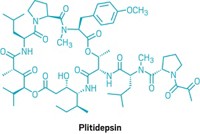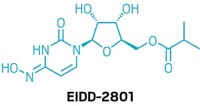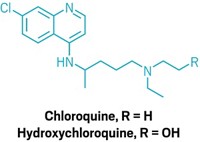Advertisement
Grab your lab coat. Let's get started
Welcome!
Welcome!
Create an account below to get 6 C&EN articles per month, receive newsletters and more - all free.
It seems this is your first time logging in online. Please enter the following information to continue.
As an ACS member you automatically get access to this site. All we need is few more details to create your reading experience.
Not you? Sign in with a different account.
Not you? Sign in with a different account.
ERROR 1
ERROR 1
ERROR 2
ERROR 2
ERROR 2
ERROR 2
ERROR 2
Password and Confirm password must match.
If you have an ACS member number, please enter it here so we can link this account to your membership. (optional)
ERROR 2
ACS values your privacy. By submitting your information, you are gaining access to C&EN and subscribing to our weekly newsletter. We use the information you provide to make your reading experience better, and we will never sell your data to third party members.
Biological Chemistry
Virus Repellent
Natural Products: Cationic sterol found in sharks blocks infection by a wide variety of viruses
by Aaron A. Rowe
September 22, 2011
Sharks have an uncanny ability to fend off viral infections, and that resistance might come courtesy of a cationic sterol molecule that is present within their tissues, according to a new study (Proc. Natl. Acad. Sci. USA, DOI: 10.1073/pnas.1108558108). The work suggests that the lipid natural product could be a lead for novel antiviral agents
Squalamine was originally isolated from dogfish sharks, and it has already been tested on humans as a treatment for cancer, according to Michael Zasloff, a researcher at Georgetown University Medical Center who led the study. He says his team’s study provides compelling evidence that the natural product should be tested on humans as an antiviral agent, particularly for those viruses that take up residence within the liver.
Rather than inhibiting a viral enzyme, squalamine seems to exert its antiviral effects by interacting with the host cells, Zasloff and his team find. Using X-ray diffraction and molecular dynamics simulations, they studied the lipid’s mechanism of action. “It will enter a cell and it will be attracted to membrane surfaces that are of the opposite charge— negatively charged,” Zasloff says. Among its many effects, squalamine can displace a protein called Rac1 from the membranes of host cells. Viruses often rely upon that protein for assistance when entering host cells. When Rac1 has been displaced, it’s harder for viruses to get in.
The researchers also showed that squalamine can prevent infections by the dengue virus and two types of hepatitis in vitro. It can also protect live rodents from yellow fever, cytomegalovirus, and encephalitis, they found. Unfortunately, the compound showed some signs of toxicity when it was introduced to liver cells at high doses, points out Massachusetts Institute of Technology’s Todd Rider, the developer of an antiviral technology called DRACO. “It will be interesting to see what additional viruses squalamine is or is not effective against, and whether the antiviral efficacy can be achieved without toxicity in the liver or any other organs,” he says.
Although squalamine has been tested on humans, its effect on liver cells is worrisome, says Norbert Bischofberger, chief scientific officer at Gilead and a key member of the group that developed the antiviral drug Tamiflu. He notes that “in some viral infections, like Ebola, some toxicity can be tolerated while treatments for other viruses, like rhino, have to be very clean.”
Zasloff argues that squalamine’s effect on the liver is not only reversible but also to be expected in a drug that is rapidly metabolized by the liver. His lab is now working to develop an oral prodrug that could be tested on patients infected with hepatitis C.
Some researchers worry that people might begin taking shark-based dietary supplements in the hope that they will rid their bodies of viruses. But that won’t help anyone ward off a viral infection, Zasloff emphasizes. He has tested several supplements that purportedly contain squalamine and he hasn’t detected the compound. Even if people consumed very large servings of shark liver oil, they wouldn’t get an adequate dose of the substance, he says.






Join the conversation
Contact the reporter
Submit a Letter to the Editor for publication
Engage with us on Twitter